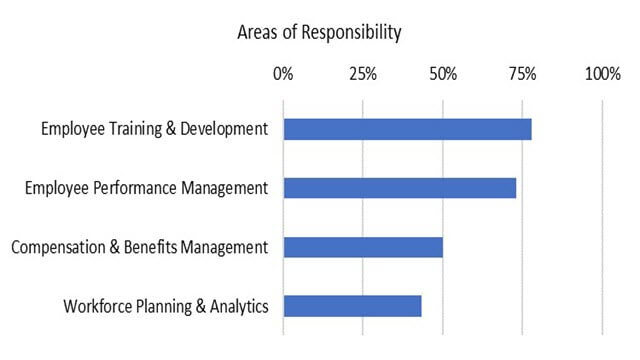“People make the ultimate difference” Bill McDermott, CEO SAP
Even the best ideas can fail. Success is never guaranteed. It is dependent upon the talent, drive, and compatibility of human beings. Companies don’t just need bodies – they need people who have the talent and skills to meet the job requirements, and are a good fit for the team. Recruitment, therefore, is high stakes, mission-critical work.
To learn more about how crucial recruitment efforts are managed, particularly in small business, we surveyed 2,341 business professionals responsible for recruitment activities. Of those surveyed, 50% were in HR and 50% were in the lines of business. The survey included professionals in the US, the UK, and France across a range of industries, with an emphasis on retail, hospitality, and healthcare. All participants represented companies with fewer than 500 employees.
Our comprehensive report details specific findings; broadly, we learned the following:
CONSTRAINTS
Multiple, Unrelated Responsibilities
95.2% of those surveyed also had additional job duties including employee training and development, performance management, compensation and benefits, and workforce planning (not to mention line of business responsibilities).

97.0% performed multiple functions within recruitment – some combination of managing candidate searches, interviewing candidates, tracking applicants, and making hiring decisions. Individuals dedicated solely to recruitment does not appear to be typical in companies of fewer than 500 employees.

In addition to other duties and activities, 58.7% of respondents hired 10 or more people in the previous 12 months, indicating there are multiple candidate searches being managed at any given time.

Time pressure to make hires
94.3% indicated that urgency to fill the role was a key factor in the level of difficulty involved in filling an open position. Even in markets where it is common to give two weeks or more notice before leaving a position, time pressure to hire still exists across the three markets. Given the rhythm of business today and employee loyalty dynamics (e.g., job hopping), there is a narrow window between approval to fill an open position and the need to have someone functioning in that position.
Growth and evolution are main triggers
84.4% indicated that a factor prompting new hires was growth and evolution including business growth, expansion, evolving job requirements, and restructured roles. The remainder indicated the trigger was more “functional” in nature (sick or maternity leave, retirement, normal turnover, seasonal workforce, increasing overtime). This indicates a strong strategic nature to hiring activities, increasing the stakes for finding candidates that are a good fit for evolving organizations.

Lots of manual effort
Use of online job boards or career websites is high (72.7%), as is use of software specifically to support the hiring process (61.4%).
Still, 56.7% use printed documents and 51.7% use spreadsheets to manage hiring activities. This generally means printing resumes, manually marking them up and sorting them according to level of interest, and then using XL to track applicants through the interview process.
94.7% indicated two or more people are involved in the hiring process even though this level of manual effort is not conducive to team collaboration.

EXTERNAL FACTORS
Tight labor pools
It’s a candidate’s market: 96.5% of respondents say quality of available candidates is a factor that influences the difficulty of filling a job, 92.5% say availability of candidates is a factor, and 90.3% say competition for candidates is a factor.

Inefficient processes
In this environment, where there is time pressure to make hires and it’s challenging to find good candidates, 77.7% of respondents say completing the hiring process in an efficient and time-saving way is a challenge.
Across the hiring process, 78.6% say managing postings on multiple job boards is a challenge, 76.5% indicated that keeping track of applicant status and follow-ups is challenging, and 75.7% say consolidating and organizing feedback from co-workers is a challenge.
Given these dynamics it’s not surprising that people involved with recruiting want the following:
| Access to more qualified candidates |
92.30% |
| Easier to manage job posts |
84.80% |
| More lead time for recruitment |
84.10% |
| Easier to collaborate with peers during candidate evaluation |
83.60% |
| More accessible database of previous job descriptions |
82.70% |
| More automation / less paper |
80.90% |
| Better applicant tracking software |
80.50% |
| More budget to promote job posts |
77.40% |
| More staff to support hiring |
74.60% |
Individuals tasked with recruitment – HR and hiring managers – are craving a better way. They want access to more and better candidates, they want to move away from printing documents and filing them in folders, and they want a better way to collect, aggregate, and store coworker feedback. Ultimately, they want to find ways to move and act more quickly.
People involved in recruitment are operating under some very challenging conditions. There is a tremendous opportunity to make things easier for them by enabling better business processes like hiring triggers, job descriptions, job posting, and collaboration. The hiring process is calling for tools and technology to support the end-to-end lifecycle.
This article was written by Jeff Rosenberg, Co-Founder and Partner at WideOpen, and originally appeared on WorkConnect by SAP.
Post Views: 1,095